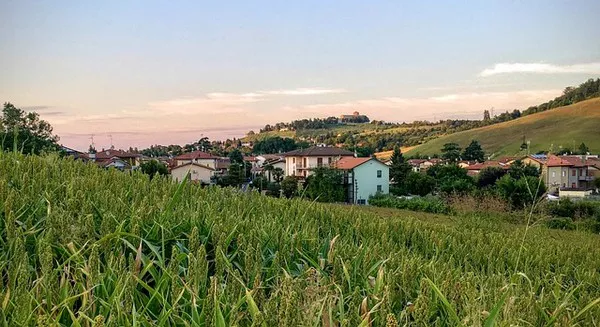Connecticut, USA – The prevalent and robust growth of tall Phragmites and cattail (Typha) alongside highways and byways in the northern United States has been a familiar sight for years. These hardy plants have thrived in the salty environments created by the application of deicers during the cold winter months, thriving in degraded wetland settings along roadsides.
A recent study conducted by researchers from the University of Connecticut’s College of Agriculture, Health, and Natural Resources, in collaboration with Loyola University Chicago, sought to explore whether these invasive species could play a role in mitigating the presence of salt and metal contaminants in these roadside environments. Their findings, published in the journal Ecological Engineering, offer intriguing insights into the potential of these plants as environmental cleansers.
Associate Professor Beth Lawrence from the Department of Natural Resources and the Environment at the University of Connecticut has been at the forefront of researching the management and restoration of wetlands in the Great Lakes region. Her focus has primarily centered on invasive plant species like Phragmites and cattail, which, once they invade wetlands, create conditions that are unfavorable for native species. This transformation leads to diminished biodiversity, reduced wildlife habitat viability, altered nutrient cycling, and modified greenhouse gas emissions.
Invasive plant management often resorts to herbicides, which, as Lawrence points out, have their limitations. Therefore, the research team embarked on exploring the feasibility of mechanical harvesting methods as a sustainable means of restoring these ecosystems.
Lawrence underscores the significant increase in road salt application post-World War II and the subsequent environmental concerns it has raised. Roadside ecosystems have become increasingly saline and laden with heavy metals like zinc and lead from vehicular emissions. The chemical properties of salt ions facilitate the mobilization of heavy metals in the soil, rendering them more mobile in the environment and potentially causing problems.
Public and environmental groups have raised concerns about mitigating the impacts of road salt. While society demands drivable roads during winter storms, there are undeniable environmental costs associated with road salt usage. Once road salts infiltrate the environment, they can contaminate aquifers, groundwater, and surface waters, posing long-term challenges.
Given these circumstances, the research team turned to nature for potential solutions. Some plants that thrive in brackish conditions have the capacity to uptake and store salt in their tissues. The researchers hypothesized that cattail and Phragmites might be absorbing salts and metals from the roadside environments. If substantiated, harvesting these plants could help reduce contaminants in the surroundings.
To conduct the study, the team collaborated with the Illinois Tollway and identified ten wetland detention basins, each ranging from half a hectare to one-and-a-half hectares in size. What sets this study apart is its scale; while much previous research had been confined to small-scale experiments in greenhouses, this study engaged with hectares of land.
These wetland locations were predominantly occupied by either cattail or Phragmites, and the team meticulously estimated the composition percentages. Half of these sites were randomly designated as control zones, while the other half saw biomass harvesting during two growing seasons. The researchers conducted comprehensive measurements before commencing the experiment, including biomass assessments, soil chemistry analysis, and examination of plant tissue chemistry.
Following the harvest, the team analyzed the plant materials for salt and metal content. Their findings indicated that cattail demonstrated a higher efficacy in salt absorption, particularly in its green tissue.
According to Lawrence, “Plants have different strategies for dealing with salt, and cattail is a salt accumulator.” The higher sodium and chloride content in the live green tissue compared to senescent litter from previous years make cattail a promising candidate for salt remediation.
Conversely, Phragmites exhibited superior capabilities in accumulating metals, with higher levels of zinc and copper distributed evenly between its green and dead tissues.
Lawrence suggests that the choice of plant species and the timing of harvesting should align with the target contaminants. For example, if the focus is on removing metals, Phragmites might be the preferred choice, with the possibility of harvesting during winter. In contrast, for salt removal, cattail harvesting during the growing season appears more suitable.
While these findings present a promising avenue for environmental remediation, Lawrence underscores that the amount of salt applied to roads annually far exceeds the capacity of these plants to absorb it. She emphasizes the urgent need to reduce road salt application, particularly in highly urbanized areas.
Moreover, the challenge of dealing with the harvested, contaminated biomass must be addressed. Lawrence discusses various strategies, including the production of pellets for pellet stoves from invasive species biomass or its digestion in anaerobic digesters, but acknowledges that addressing the issue at scale with industrial partners is essential.
In conclusion, Lawrence’s key takeaway from the study is that plant remediation through roadside biomass harvesting could serve as a valuable tool in reducing downstream salt and heavy metal loads. However, the primary focus should remain on minimizing the excessive salt introduced into the environment in the first place.
“It takes a lot of energy to run the harvesting equipment and to move the biomass around. Then can we remove the pollutants from the biomass? Yes, I’m sure we could, but again, it’s going to take a lot of energy to extract. We need to be more conservative with how much salt we’re releasing into the environment in the first place, but this is a tool in the roadside manager’s toolbox to improve environmental quality,” Lawrence concludes.


